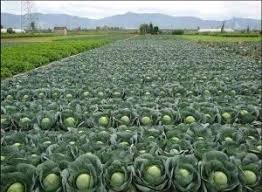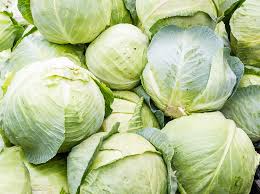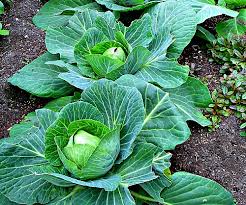![]()
If you’ve landed on this article page, you’re probably searching for a
good business idea—an idea that’s light on the pocket but heavy on
returns, promising both a fulfilling journey and potential profit.
|
How to start Cabbage farming in Nigeria
Cabbage farming in Nigeria is very profitable because the
vegetables are very popular for the preparation of salad and
other condiments
Nigeria produced around 2.4 million tons of cabbage in 2020,
making it the largest producer of cabbage in Africa. Cabbage
farming is also gaining popularity in other African countries
such as Kenya, Tanzania, and Ethiopia. Globally, China is the
leading producer of cabbage, followed by India and South Korea.
The global cabbage market is projected to grow at a CAGR of 5.6%
during the forecast period of 2021-2026, driven by increasing
demand for healthy and organic food products.
Cabbage require a lot of water and cool conditions to form big
heads.Cabbages grow best in cool environments. High quality
cabbage seeds have a higher rate of germination, are more
resistant to local pests and diseases, produce bigger cabbage
heads and mature faster.
Cabbages are grown from seeds. The seeds are sown in a nursery
bed. The seedlings will grow faster and become stronger if the
correct spacing is used, the soil is fertile and adequate water
is provided.
Cabbage seedlings are transplanted when they are about 15cm
high. This is usually after a month in the nursery.
Cabbages grow fast when grown under the right conditions. As a
result, they require fertile soil.
Avoid premature harvesting of cabbage. Unlike tomatoes, cabbages
keep fresh at the market for longer.
Increase length of storage by harvesting your cabbages at the
right time . In addition, store them in a cool, moist
environment.
Most cabbages end up in rural markets and urban centers.
Cabbages for processing need to have bigger and firmer heads.
Increase your profit by supplying rural markets with small and
medium head varieties.
The vegetables are packed with minerals and vitamins C and E.
Prepare the Land for Cabbage Cultivation
Proper land preparation is crucial for successful cabbage
farming. This step involves several activities to create an
optimal growing environment for your cabbage plants.
Soil testing: Conduct a soil test to determine the soil’s pH and
nutrient levels. This will guide your fertilization and soil
amendment strategies.
Clearing: Remove any existing vegetation, rocks, or debris from
the field.
Plowing: Use a tractor or manual tools to plow the land to a
depth of about 20-30 cm. This helps to loosen the soil and
improve aeration.
Harrowing: Break down large soil clumps and level the field
using a harrow or rake.
Soil amendment: Based on your soil test results, add lime if the
soil is too acidic or sulfur if it’s too alkaline. Incorporate
organic matter like well-rotted manure or compost to improve
soil structure and fertility.
Bed formation: Create raised beds or rows for planting. This
improves drainage and makes management easier.
Irrigation system setup: Install your chosen irrigation system,
whether it’s drip irrigation, sprinklers, or furrow irrigation.
Fencing: If necessary, install fencing to protect your cabbage
crop from animals.
Proper land preparation sets the foundation for healthy cabbage
growth and can significantly impact your yield and
profitability.
Select the Right Cabbage Varieties
Choosing the appropriate cabbage varieties for your farm is
crucial for success. The best variety will depend on your local
climate, market demand, and intended use of the cabbage.
Popular cabbage varieties in Nigeria:
Copenhagen Market: An early maturing variety with compact heads,
suitable for fresh market sales.
Glory of Enkhuizen: A mid-season variety known for its large
heads and good storage qualities.
Drumhead: A late-maturing variety with large, flattened heads,
ideal for processing.
Chinese Cabbage (Napa Cabbage): Not a true cabbage but often
grown alongside traditional varieties due to increasing demand.
Red Cabbage: Adds variety to your product offering and is
popular in salads and for its nutritional benefits.
Factors to consider when selecting cabbage varieties:
Disease resistance: Look for varieties with resistance to common
cabbage diseases in your area.
Maturity time: Consider planting a mix of early, mid, and
late-season varieties to spread out your harvest.
Market demand: Select varieties that are popular in your target
market.
Intended use: Some varieties are better suited for fresh
consumption, while others are ideal for processing.
Consult with local agricultural extension officers or
experienced cabbage farmers to get recommendations on the best
varieties for your specific location and market.
In Nigeria, cabbage can be grown year-round in cooler regions,
but in warmer areas, it’s best planted during the cooler months
(October to March). Adjust your planting time based on your
local climate and market demand.
Planting methods:
Direct seeding:
Create shallow furrows in the prepared beds.
Sow seeds 1-2 cm deep and 30-45 cm apart within rows.
Space rows 60-75 cm apart.
Thin seedlings to the recommended spacing once they reach 5-7 cm
in height.
Transplanting seedlings:
Prepare holes in the beds, spaced 30-45 cm apart within rows and
60-75 cm between rows.
Carefully remove seedlings from trays or nursery beds, ensuring
minimal root disturbance.
Plant seedlings slightly deeper than they were in the nursery,
firming the soil around them.
Water immediately after transplanting.
Planting tips:
Plant in the evening or on a cloudy day to reduce transplant
shock.
Ensure proper spacing to allow for good air circulation and
reduce disease risk.
Water thoroughly after planting to help establish the young
plants.
Consider using a starter fertilizer to promote early growth.
By implementing proper planting techniques, you set the stage
for a healthy and productive cabbage crop.
Fertilization guidelines:
Base fertilization:
Apply well-rotted manure or compost (10-20 tons/hectare) during
land preparation.
Incorporate balanced NPK fertilizer (e.g., 15-15-15) at 200-300
kg/hectare before planting.
Top dressing:
Apply nitrogen fertilizer (e.g., urea) at 100-150 kg/hectare in
2-3 split applications: a) 2-3 weeks after transplanting b) At
the beginning of head formation c) 2-3 weeks before harvest (if
needed)
Weed Management
Effective weed control is crucial for cabbage farming success,
as weeds compete with cabbage plants for nutrients, water, and
sunlight. Implementing a comprehensive weed management strategy
can significantly improve your cabbage yield and quality.
Harvesting Your Cabbage
Crop
Proper harvesting techniques and timing are essential for
maintaining the quality of your cabbage and maximizing your
profits. Knowing when and how to harvest your cabbage can
significantly impact its market value and shelf life.
With proper management, attention to detail, and a commitment to
quality, your cabbage farming venture in Nigeria can become a
thriving and profitable business. As you grow and expand your
operations, continue to adapt your strategies to meet changing
market demands and environmental conditions.
By contributing to Nigeria’s agricultural sector, you’re not
only building a successful business but also playing a crucial
role in enhancing food security and economic development in your
community and the nation as a whole. Best of luck in your
cabbage farming endeavors! Get our Practical Guide on how to start Cabbage Farming in Nigeria. Cabbage farming in Nigeria has become an increasingly lucrative venture, offering farmers the opportunity to tap into both local and export markets. With its nutritional value and versatility in culinary applications, cabbage remains a staple in many Nigerian households and restaurants. This comprehensive guide will walk you through the step-by-step process of starting and maintaining a profitable cabbage farm in Nigeria, covering everything from initial planning to harvesting and marketing your produce.
|







